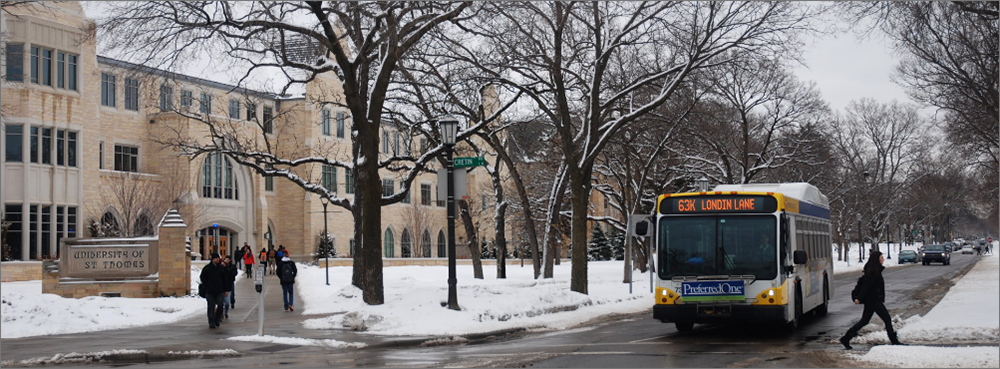
Metro Transit is always looking for ways to improve its transit service, which includes making routes faster and more reliable.
The Speed and Reliability Program finds and implements low-cost, common sense strategies to improve the performance of local bus service along high ridership corridors and routes through two types of initiatives:
-
Bus Corridor Projects focus on improving speed and reliability along specific, high-ridership corridors that are usually served by more than one urban local bus route
-
Better Bus Route program focuses on improving the speed, reliability, accessibility, and customer experience on one high ridership local bus route at a time
Bus Corridor Projects
Metro Transit partners with cities and counties to improve transit speed and reliability along high-ridership corridors served by one or more urban local bus routes. These improvements are often coordinated with a city or county project to resurface or redesign a street.
Common strategies include:
-
Installing bus lanes or other transit advantages to keep buses moving in congested areas
-
Implementing transit signal priority to give the bus more green time at select signalized intersections
-
Consolidating bus stops to provide a more consistent trip with the bus having to stop and start less frequently
-
Reducing time at the bus stop by adding ways for customers to pay their fares before boarding
We sometimes test the concept through temporary changes to allow planners to see effects on traffic, gather public feedback, and measure changes to route performance. If the initial results are favorable, the lessons learned are incorporated into the final plans for implementing permanent changes.
In 2019, Metro Transit completed two permanent bus lane projects on Hennepin Avenue and Chicago Avenue. A third project was a temporary pilot project on Nicollet Avenue. Due to COVID-19, no projects were implemented in 2020.
In 2021, we will be partnering with the City of Minneapolis on bus lanes along downtown transit corridors. More information will be available soon.
Better Bus Routes

The Better Bus Routes program improves customer experience by reducing stops, improving accessibility and providing more shelters in addition to the speed and reliability strategies list above. Better Bus Route projects include:
Consolidate bus stops
It seems counterintuitive that removing bus stops would improve service. But by spacing bus stops up to a one-quarter of a mile apart, buses don’t have to stop as frequently, which has the resulting benefits:
-
Reduces overall travel time
-
Helps buses stay on schedule
-
Makes the trip more consistent and reduces delays
-
Provides a smoother ride with less starting and stopping
When working on a Better Bus Route project, Metro Transit planners carefully analyze each stop and consider the following factors to remove it or keep it:
-
Distance between stops
-
Ridership
-
Transfers to other bus or rail service
-
Adjacent destinations such as hospitals, schools, or grocery stores
-
Roadway design such as street crossings, signals, and sidewalks
-
Existing transit facilities
Improve accessibility
The Better Bus Routes program also makes improvements to sidewalks, pedestrian signage, and visibility. Metro Transit employees complete a detailed audit of the route to determine if any bus stops do not comply with the Americans with Disabilities Act (ADA). Most non-compliant stops can be fixed by adding a concrete boarding pad. In rare cases where it is not possible or practical to make a bus stop ADA-compliant, staff determine if the stop should be removed or if other mitigations are possible.
Improve the waiting experience
The Better Bus Route program continues the mission of Metro Transit’s Better Bus Stops program to increase shelter availability and transit information at bus stops. But unlike Better Bus Stops, Better Bus Routes focuses these improvements to stops along a specific route. Metro Transit uses these shelter placement guidelines to prioritize stops that get shelters.
Other improvement strategies
Project staff examine all aspects of the route to identify other areas of improvement. Additional strategies we consider include:
-
Increasing the frequency of service, as resources allow, to provide more trip times
-
Implementing transit signal priority to give the bus each green time at select signalized intersections
-
Changing the route alignment to improve directness or simplify complex branches
-
Installing bus lanes or other transit advantages to provide consistent travel times in congested areas